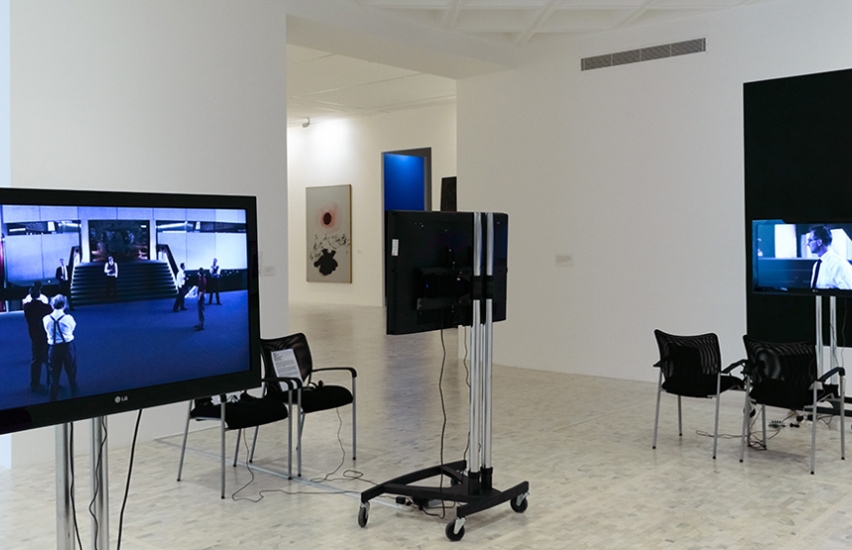Curator:
Julieta González (lives and works in Mexico City, DF).
Description:
Tomorrow Was Already Here, curated by Julieta González, on view at the Museo Tamayo, Mexico City, DF from August 21st, 2012 to January 27th, 2013.
Artists in the exhibition: Julieta Aranda, Carol Bove, Fernando Bryce, Gerard Byrne, Johan Grimonprez, Kiluanji Kia Henda, Július Koller, David Maljkovic, Dorit Margreiter, Rita McBride, Steve McQueen, Matthias Müller, The Otolith Group, Pedro Reyes, Jane and Louise Wilson, and works from the collection by Kenneth Armitage, Martha Boto, Sérgio de Camargo, Adolph Gottlieb, Barbara Hepworth, Julio Le Parc, Matta, Henry Moore, Ben Nicholson, Victor Pasmore, Giò Pomodoro, Earl Reiback, Jesús Soto, Simon Starling, and Victor Vasarely.
“The past two decades have witnessed major shifts in contemporary art practices towards what some critics and art historians have identified alternatively as the ‘archival impulse’ and the ‘historiographic turn;’ History itself has become an important subject-matter as well as a medium for contemporary artists who favour the representational apparatuses of archival formats such as film, video and photography as prime vehicles for their historiographic endeavours.
Tomorrow Was Already Here is an exhibition that attempts to trace a particular thread of the current historiographic turn in contemporary art by showcasing the work of artists who cast a retrospective gaze towards past visions of the future. The title of the show refers to the device of the predestination paradox, characteristic of time-travel related science fiction, whereby a traveler from the future travels to the past and, more often than not, effects irreversible changes in the future, which result in the traveler’s erasure from it. Thus, tomorrow returns as a spectral presence from the past; it is no longer within our reach. Though not included in the exhibition, Chris Marker’s La Jetée is an overarching presence in the exhibition and the time-loop paradox that lies at the heart of the exhibition pays tribute to his work.
“The spectres of modernity and its utopian visions of the future haunt this exhibition, constructed upon some of the predictive cultural imaginaries at the height of the Cold War, many of which intersect the realm of science fiction and are set against three backdrops: anxiety in the face of nuclear annihilation; space travel and colonization as a powerful trope in the culture of the time; and architecture as the visible realm in which many utopian undertakings of the past took concrete form.
“Works from the collection of the Museo Tamayo serve to contextualize the three realms explored by the exhibition in small period displays, which function as time-capsules, with artworks of the 1950s, 1960s and early 1970s that engage in a reflection on similar themes, but also present different iterations of the modern.
“The notion of potentiality, of the future that could have been but never happened, pervades this exhibition. The works convey, at times, a nostalgic sense of loss in coming to terms with the unrealized potential of the twentieth century’s visions of the future. But more importantly, these artists, through their works, engage history as a way of understanding the present and constructing a vision of the future by invoking, yet again, the specter of utopia.”
—Exhibition brochure, “Tomorrow Was Already Here,” Museo Tamayo, 2012.


